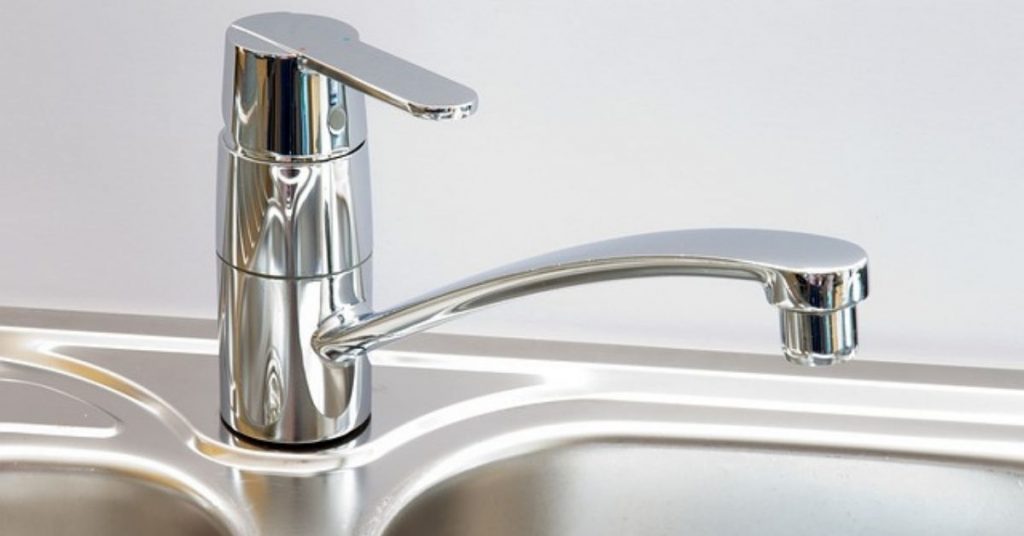
Causes of No Water in the House and Solutions
- Water Supply Interruption: The most common reason for no water in the house is a water supply interruption from the municipal source. This can occur due to maintenance, repairs, or emergencies. Solution: Contact your local water utility to inquire about the cause and expected duration of the interruption. In most cases, it’s a temporary issue.
- Frozen Pipes: During cold weather, pipes can freeze and block water flow, leading to no water in the house.Solution: Thaw the frozen pipes carefully using methods like heating tape, a hairdryer, or warm towels. To prevent future freezing, insulate exposed pipes and keep a faucet dripping during cold spells.
- Leaking or Burst Pipes: A leaking or burst pipe can result in a loss of water pressure or supply.Solution: Shut off the main water supply to prevent further damage and call a plumber to repair or replace the damaged pipe.
- Closed Shut-Off Valves: Sometimes, shut-off valves for specific fixtures or areas in the house are mistakenly turned off.Solution: Check the shut-off valves for the affected areas and ensure they are fully open. You may need to turn them counterclockwise to open.
- Water Pump Failure: In homes with well water systems, a malfunctioning water pump can lead to no water supply.Solution: Check the pump and pressure tank for issues. If needed, consult a well water professional to repair or replace the pump.
- Clogged Filters or Screens: Filters or screens in faucets and appliances can become clogged, restricting water flow.Solution: Clean or replace filters and screens regularly to maintain proper water flow.
- Water Softener Problems: Malfunctioning water softeners can impact water supply and pressure.Solution: Inspect the water softener and consult the manufacturer’s instructions for troubleshooting. If necessary, call a professional for repairs.
- Well Issues: For homes with well water, well problems such as a low water table or well pump failure can result in no water.Solution: Contact a well specialist to diagnose and address well-related issues.
- Water Pressure Tank Problems: Pressure tank issues, such as a faulty pressure switch or a waterlogged tank, can lead to no water or low water pressure.Solution: Consult a plumber or pressure tank specialist to inspect and repair the pressure tank.
- Municipal Water Supply Problems: In rare cases, the municipal water supply may have contamination or pressure problems.Solution: Contact your local water utility for information and updates on any supply issues.
Troubleshooting the Problem
I will with troubleshooting no water in the house for people who use water from the city. If you use water from a well scroll to the bottom of this post.
1. Is It Only 1 Faucet or the Whole House?
The first thing you will need to determine is if it is only one fixture without water or it is the entire house. When it is only one fixture without water then the problem is not very serious but you will still need to fix it regardless.
If there is no water in the whole house, the source of the problem will most likely be outside the house and not the inside. In this case we are talking about leaks on the main line, frozen pipes, closed shut off valve etc.
2. It is Cold or Hot Water Lacking, or Both
Another thing to find out is whether you are having only cold water and no hot water and vice versa, or you have neither hot nor cold water.
If you have cold water but not hot water, you need to dash to your basement or wherever you have your water heater to check if it leaking or what exactly is the problem. A leaking water heater is quite dangerous.
If that is the case, turn off the cold water supply from the shut off valve or from the main water valve.
Sometimes you have no hot water because the water heater is just not working. Check out this post for more information on no hot water.
What to do if Your House has No Water
The solution to a house with no water will depend on your results from the troubleshooting. I will start with how to fix the problem if you only have no water to a certain fixture.
1. Just a Faucet
If there is no water in your kitchen or bathroom sink, you could be dealing with a clogged aerator, faucet cartridge, water supply hose or shut off valve. While some of these parts can be cleaned, the shut off valve will need to be replaced since it is usually soldered.
When you have no water to your shower/bathtub, you could be dealing with a faulty faucet cartridge/valve stem or a clogged shower head. A clogged shower head can be easily cleaned but I would recommend replacing a shower cartridge.
I have written a detailed post on how to replace a shower cartridge. Read it here.
Kitchen and bathroom sink faucets are however the most affected and I will outline a detailed guide on how to troubleshoot and fix them. Here are the steps to follow:
Check the faucet aerator.
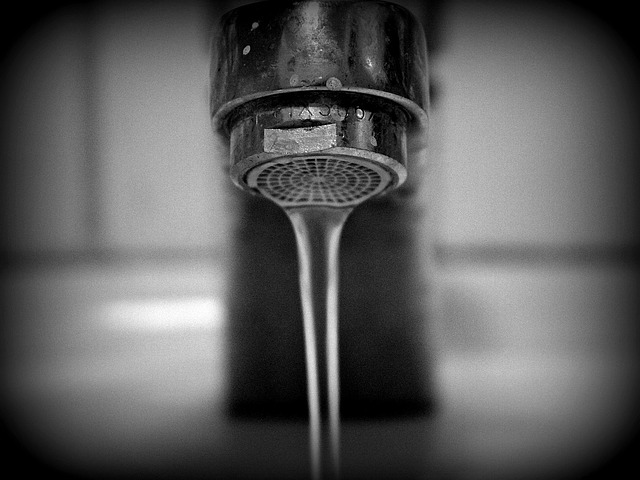
A faucet aerator is the small attachment at the front of the faucet spout with fine holes. It prevents the water from splashing back at you when your turn on the faucet.
Due to the small size of the holes, the aerator is more likely to get clogged by mineral deposits and pipe corrosions. Although most of the time it will result in low water pressure, when there is a lot of debris in the water the aerator could be completely blocked and hence no water.
- To remove the aerator, grab it with a wrench/pliers and turn it counterclockwise. Before that, remember to wrap a cloth or tape around it to prevent burring/peeling off the finish.
- Turn on the faucet and check if there is water coming out. If not, the problem could be the cartridge, water supply hose or shut off valve.
- If the faucet aerator was the problem, you will need to clean it in a bowl of vinegar then install it back.
Check the Water Hose and Shut off Valve
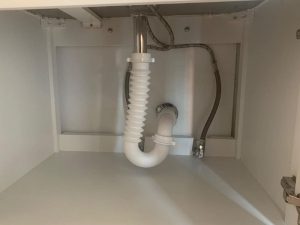
If you check under your kitchen/bathroom sink, you will see 2 oval valves where the water supply hoses (hot and cold) are connected. That is where you need to check next.
- Remove all the items that you have stored under the sink.
- Check if the valves are fully open in the first place. A fully opened valve should be turned all the way counterclockwise.
- If the valve is in the open position close.
- Disconnect the supply hose from the valve. Use a wrench to disconnect the hose from the valve.
- Slowly open the valve and see if there is water coming out. Have a rag nearby to wipe off the water.
If there is water coming out of the valve, you have faulty faucet cartridge or clogged water supply hose. You will need to replace one of the 2 or both.
If there is no water flowing out of the valve, the valve is clearly defective and will need to be replaced. Replacing a shut off valve will in most instances need the services of a plumber unless you are experienced using a torch and soldering.
2. The Whole House
If there is no water in your entire house, you will need to fix the problem as soon as possible. You just can’t live in a house without water.
There are few things you need to do when you discover that you have no water in the entire house.
Check your Main Shut Off Valve
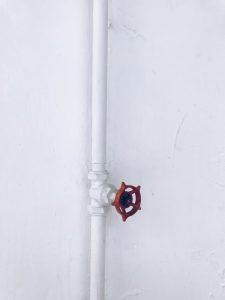
This may sound surprising to you but someone in your household could have turned off the main house shut off valve and forgotten to turn it back on. Unless you live alone, this is a possibility especially if you have young children.
You water shut off valve will be located in your basement or outside where the main pipe enters the building.
If your valve uses a knob, turn it all the way counterclockwise if it is not already. For a lever-handle valve, the lever should be at 90 degrees to the water pipe.
Look for Leaks
You definitely do not want to have leaks in your house but they happen. Walk around your property looking for leaks.
Unfortunately, leaks could be in an underground main water pipe which is not possible to see. What do you do in such a situation?
Use your water meter!
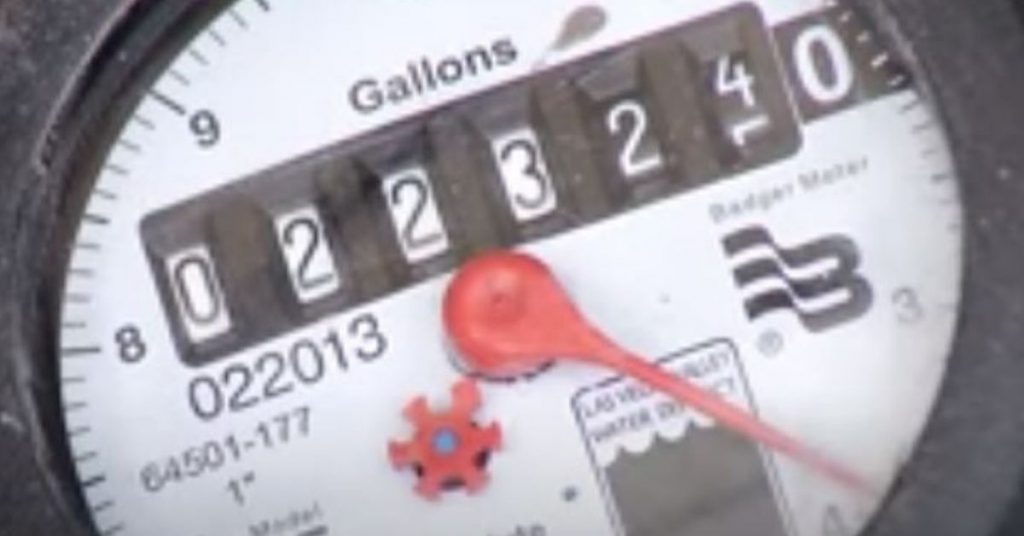
Your water meter is usually located between your house and the street, near the curb or sidewalk. It is found inside a concrete box with a metal or plastic lid and “Water” or “Water Meter” written on top of it. In very cold climates, the meter will be found inside the house, usually in the basement.
In this case, you want to see if there is a leak between the meter and the shut off valve. Between these two water components is the water main line which runs from the underground.
When you open the water meter lid, check if the leak detector is spinning. A leak detector is the small wheel which looks like a gear. It is used to detect minor leaks. If you have a major leak you will even see the numbers moving.
When the leak detector is not spinning, that is both good and bad news. Bad news because there is no water in your house, and good news because at least there are no leaking pipes.
Ask Your Neighbors or Call the Water Company
If there is no water flowing to your home, you can check with your closest neighbor if they are having the same problem as well. When the entire neighborhood has no water, it could be that the city has shut down the water to repair their pipes.
Alternatively, you can pick up the phone and call the city water department and ask why there is no water in your house. Check with them also when they expect the water to be back.
Sometimes your city will shut the water to your house if you have failed to pay water bills.
Unclog the Pipes
If you house still has the old galvanized steel pipes, you can’t rule out corrosion and clogging. When that happens, the flow of water is restricted, meaning you will either have low water pressure or no water at all.
Continued corrosion will also lead to weakening of the pipes and eventually leaks. That is why I recommend replacing the pipes with PEX or copper.
It is not easy to find out if your pipes are clogged on your own. You will need to hire a plumber to do it for you. A plumber will use a camera to inspect the pipes and if they are clogged could recommend hydrojetting to flush out the clogs.
Do You Have a Well?
If you have no water from a well, this is what to do:
1. Check the Breaker
The first thing to do if you notice that you have no water and you use a well is to check if the pump is being powered. It may seem like a trivial thing to say but if there has been a power outage or power surge, it is not unusual for the breaker to trip.
Dash to your main electrical panel and check the well pump circuit breaker. If it is in the off position flip it back to the on position
2. Check the Pressure Tank
Water from the well is temporarily held in the pressure tank. There will be a pressure gauge connected to the pressure tank manifold. Check the pressure reading on the pressure gauge.
If there is sufficient water pressure (40-70 psi), the problem is not in the well. If however there is no pressure in the gauge and the pump is not cycling, the pump could be faulty.
I have written a detailed post on how to troubleshoot a well pump. Read it here.
3. Check the Filtration Equipment
If there is sufficient water pressure indicated by the pressure gauge, you could be dealing with failed/clogged filtration equipment.
To check if this is indeed the issue, bypass the filtration equipment and check if this fixes your problem. If it does, you will need to replace or clean your water filtration equipment.
4. Have you Used Lots of Water?
If you have drawn lots of water from the well like watering lawns, the water in your well could get depleted. This is especially the case following long periods of drought.
Turn off power to your well pump for a few hours and give your well time to rejuvenate.
